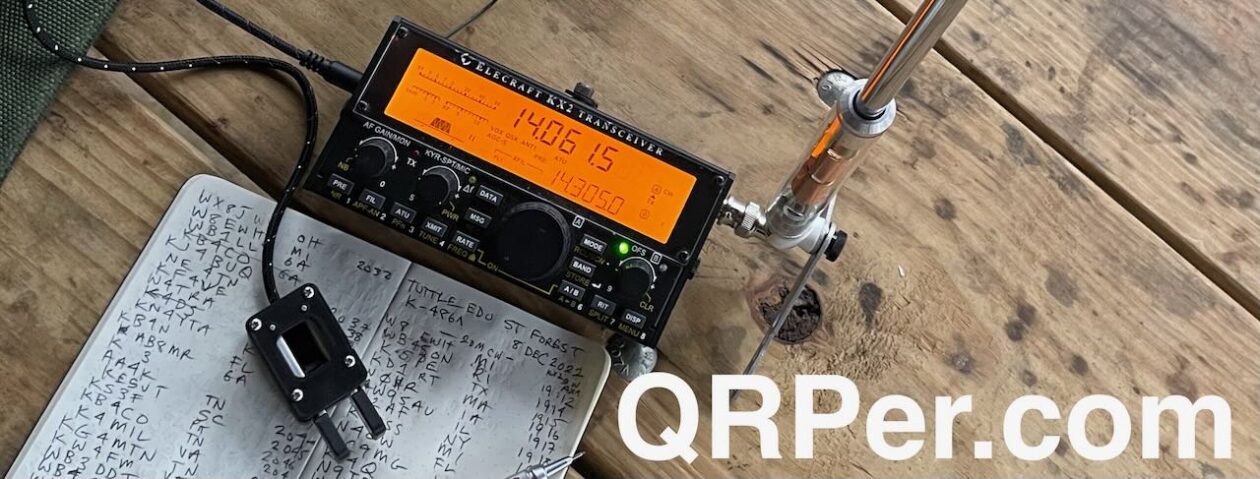Many thanks to Matt (W6CSN) who shares the following post from his blog at W6CSN.blog:
The Adventure you get is not always the adventure you expect. Recently I’ve been plotting a unique activation of the De Anza National Historic Trail, but that particular POTA activation is going to need a good antenna and just as importantly, time.

This day afforded a few hours in the morning for outdoor radio but not enough to retrace the steps of the De Anza expedition. Instead, I headed down to the San Francisco Bay side for a quick outdoor amateur radio session.

Since it was was a Saturday, my usual spot at Presidio East Beach was heavily impacted by weekend recreation enthusiasts, so I continued for a quarter mile to the practically empty parking lot east of the St. Francis Yacht Club.

Thence on foot past the old stone light tower and the clubhouse of the Golden Gate Yacht Club, you find yourself of the path to the end of the breakwater where a unique art installation sits.

The Wave Organ is a curious sculpture that uses tubes and cavities between old cemetery stones to channel and amplify the watery sounds of waves as the tides move in and out of the Bay.

Surrounded by saltwater at the end of this jetty, which by my reckoning is within the boundary of the Golden Gate National Recreation Area (US-0647), this location was perfect for the “no impact” operation afforded by the Elecraft KH1.

My plan was to see if I could complete an activation of making 10 contacts entirely by hunting other POTA activators, perfectly reasonable given it was a weekend with no geomagnetic storms to disrupt radio propagation.

What I did not count on was that it was a contest weekend with both 20 and 15 meters wall-to-wall with rapid fire contesters. As a QRP station, finding the POTA needles in that haystack was going to be tough.

I retreated to 17 meters which should offer good daytime propagation and no contesters. There on 18 MHz, I was was able to collect five park-to-park contacts in a span of 23 minutes.

At that point I’d exhausted all of the 17m active CW stations on the POTA spots page and didn’t really have time to wait for more to show up. Therefore the “all hunting” activation strategy was abandoned and I commenced calling “CQ POTA.”

The activation was “validated” with a call from Dave, AA7EE as the 10th QSO and then completed with one more park hunted, K9DXA in US-1001. Most of the contacts were with stations east of the Rockies.

One thing I learned from earlier outings with the KH1 was to not cut the log sheets too small, as might be suggested by the lines printed on the page. Without enough paper under the top and bottom tabs of the logging tray the sheets can easily be caught and snatched away by the wind.

Leave enough margin on the logging sheets and they are easily secured in the tray, even in the face of brisk Bay breezes.

The “hunting only” activation plan didn’t quite work out but it was a great time out playing radio at scenic spot in San Francisco Bay.

While I didn’t expect to activate from the wave organ today, it turned out to be a fun adventure and an excellent spot from which to get on the air with the KH1.

73 de W6CSN























































































































